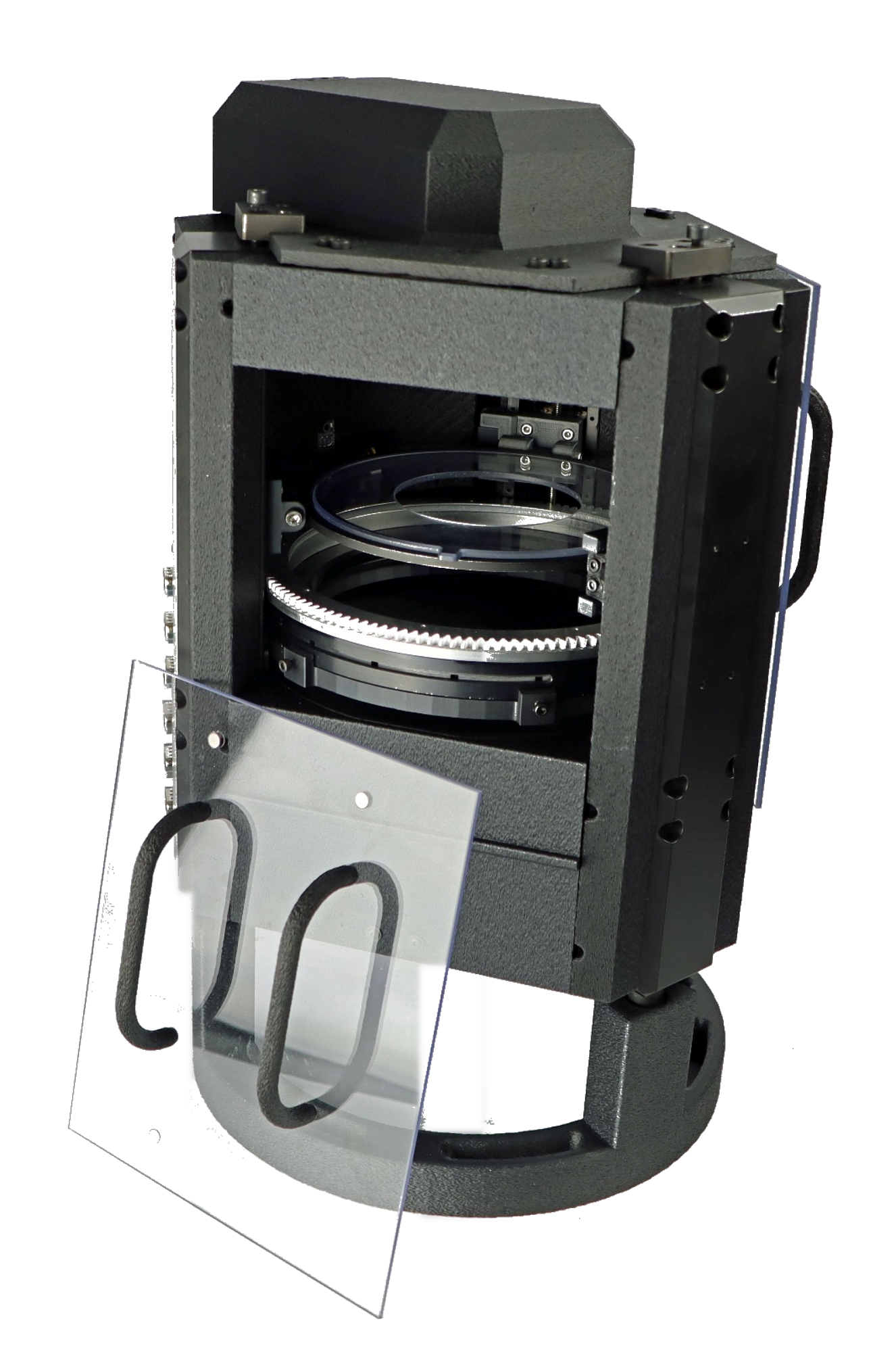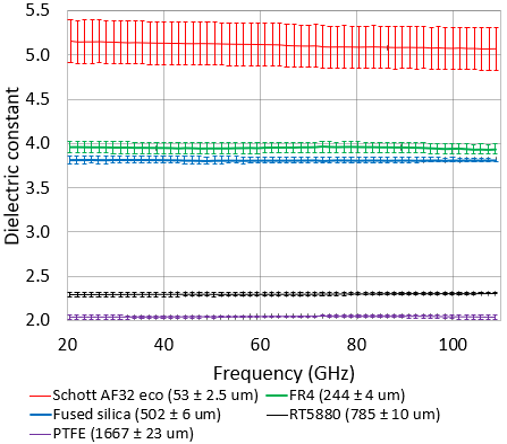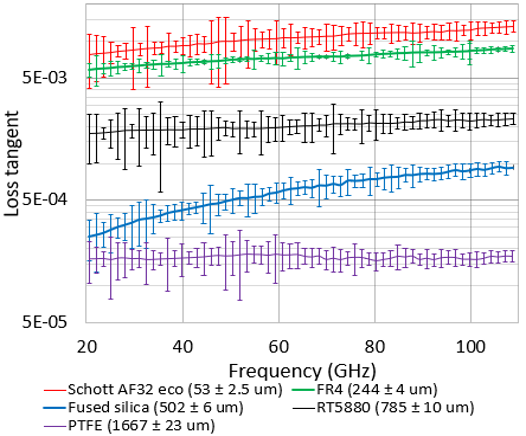Fabry-Perot Open Resonator (FPOR)
QWED offers a unique type of a Fabry-Perot open resonator (FPOR) with concave mirrors for automated broadband and precise resonant measurements of electromagnetic properties of dielectric sheets in the 10 - 130 GHz frequency range
The FPOR system is equipped with a specialized software controlling the measurement process and extracting complex permittivity of the material under test from the measured frequency and quality factor.
The FPOR system is equipped with a specialized software controlling the measurement process and extracting complex permittivity of the material under test from the measured frequency and quality factor.
Parameters:
|
|
|
10 - 130 GHz*
|
|
Dk = 1 - 15 (accuracy: ±0.2%)
|
|
Df = 5 x 10-6 (achievable accuracy: 2%)
|
|
1 µm - 3 mm
|
|
50 - 150 mm (optimum: 80 - 100 mm)
|
|
>1 minutes
|
|
room, 0 ÷ 80 C deg. (upon request)
|
|
|
|
|
*available also in various frequency range configuration
(e.g. 10 - 26.5 GHz, 10 - 43 GHz, 10 - 50 GHz, 10 - 67 GHz, 10 - 110 GHz, etc.)
(e.g. 10 - 26.5 GHz, 10 - 43 GHz, 10 - 50 GHz, 10 - 67 GHz, 10 - 110 GHz, etc.)

The whole measurement is automated and controlled via dedicated software installed on a PC computer. At first, resonant frequencies and Q-factors of TEM0,0,q odd modes of the empty resonator are measured. Afterwards, sample is inserted onto the holder and all the modes of interest are adaptively sought for and the changed resonant frequencies and Q-factors are measured in order to extract dielectric constant and loss tangent by comparing the results with a look-up table computed with a dedicated FPOR electromagnetic model.
Exemplary measurement results


